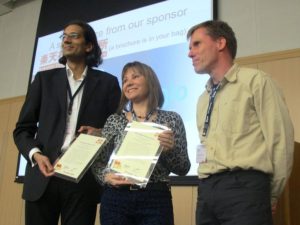Best Paper And Most Influential Paper At AOSD 2013 - AOSD.net (original) (raw)

The best paper award and influential paper award are annual awards on works presented 10 years before the award date. The $1000 prize money is divided among the authors. The award is based on the influence the paper had in the 10 years period after its presentation. The categories can either be the Best Paper or the Most Influential Paper of the year.
Most Influential Paper Award
Modularization And Composition Of Aspectual Requirements
by Ana Moreira, Awais, Rashidi and Joao Araujo

The papers are judged by their influence over the past decade.
The paper, published for the AOSD 2003 conference has had lots of influences on further activities in the field of aspect-oriented software development.
As a paper which is focused on aspect-oriented research, it is based on programming languages as regards Modularity and aspect-oriented software development. Researchers have intensified efforts with different programming constructs to make programmers fully express their modularity requirements.
The impact of “Modularization and composition of aspectual requirements” is one of the most influential and first papers that focuses on the need for dedicated support for modularization for cross-cutting concerns right from the early stage of the software development lifecycle. The paper’s proposition includes separation of both aspectual requirement and non-aspectual requirements, and composition guidelines in modules portraying coherent abstractions and abiding by properly defined requirements.
Best Paper Award

AOS 2013 proceedings booklet cover
Reactive Behavior In Object-Oriented Applications: An Analysis and a Research Roadmap
Guido Salvaneschi, Mira Mezini
As the best paper award winner, the paper depicts the problem of the modularizing reactive system which is very important to the aspect-oriented software development family. The paper’s discussion is rooted in practical data and case studies. It looks at the present state of the field with useful metrics. The paper finally inspires a research agenda by posing important questions of interests to open up more areas needing further research.